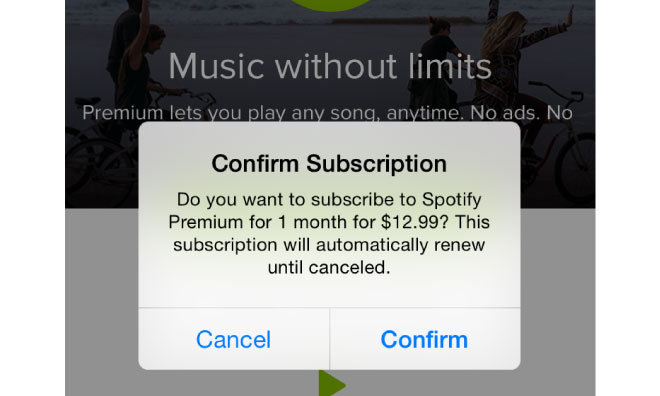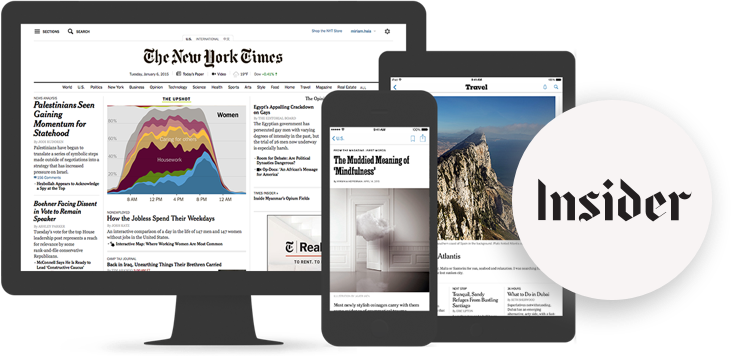A subscription-based model is just one of the revenue models that have become an increasingly popular strategy for monetizing apps, which sees users subscribe to join and pay a regular monthly fee for access to the app. This is has proven to be a hugely successful strategy for some of the most-loved app-based brands, for example, Netflix, Spotify, Tinder, and Disney+, However, in exchange, apps offering a subscription model must work to retain their customers by continually improving their offering or by offering new incentives.
While a subscription-based revenue model has its advantages for app brands, it can also cause challenges when not executed properly. Let’s dive deeper into what’s required for a successful subscription-based app, and how businesses can get the most from this model.
Benefits of Subscription App Models

Apple likes them and offers a big bonus
In 2016, Apple introduced a change in the App Store which rewarded app subscription models over others by offering developers a 85:15 revenue split, as opposed to the usual 70:30 split, for subscriptions that lasted over a year. In simple terms, Apple introduced this change as a method of rewarding developers who succeeded in retaining your customer for an extended period.
This extra cut of the App Store pie was a big deal for app developers and gave those who were on the fence about subscription-based apps a sizeable nudge to give this revenue model a try.
Subscription-based apps see great revenue
The additional App Store revenue isn’t the only financial benefit up for grabs with a subscription-based model. Subscription-based apps tend to see higher revenue per user than apps with other business models. A report from Sensor Tower showed that in 2020, global subscription app revenue from the top 100 subscription apps climbed 34% Y-o-Y to $13bn, a $3.3bn increase from 2019. Combine this with the opportunity to monetize users on the free subscription models using ads, you can see the numerous revenue opportunities available for businesses using this model.
Subscription apps result in more reliable income
Not only do subscription-based apps offer a greater chance to increase revenue, but they can also provide more reliable income.
Due to the nature of subscription-based apps, businesses can predict the revenue that will be generated month-on-month and use this to improve cash flow. As you acquire new users or existing users drop off, businesses can adapt their cash flow accordingly. This trust in your cash flow allows apps to be more confident in their marketing efforts and in planning major feature upgrades that can be developed without constant fear of things collapsing.
Mobile apps relying on subscriptions also have the added bonus of even more predictable, reliable income by offering discounts for longer subscription periods. Many apps will offer discounts for users who commit to 6- or 12-month subscriptions. It’s a win-win for everyone; users love to save money and as a result will often opt for the lower price plan with the extended commitment, and app developers can make reliable revenue projections. The benefit of knowing that at least a portion of your user base will be paying you for the next 6 or 12 months outweighs any money lost through the discounted rate. Being able to offer discounted subscriptions also offers apps some unique retention options. If a user churns or unsubscribes from your app, you may be able to rope users back in by providing their future monthly subscriptions at a discount.
Subscription-based apps results in more engaged audience
Maintaining app engagement is a huge challenge for many apps, but it tends to be easier for subscription apps since users are more actively invested in making sure they get as much out of their app as they can. When it comes to investing in something, big or small, it’s likely that users have done their research beforehand to ensure the app meets their requirements.
If users don’t feel they are getting enough value from the app, they’ll unsubscribe at the earliest opportunity.
Challenges of the app subscription model
While there are many benefits to the app subscription model, it’s not all sunshine and rainbows – there are certain challenges presented by this particular revenue model.
You need to continuously be providing new features and content
Since users are paying a monthly, recurring fee, they’ll expect more than they would for a one-off app payment. When asking users to pay a fixed fee for access to an app, you are obligated to continuously provide new content and/or features for the user.
It’s essential that you make it clear to your users that you’re in this for the long haul! Consistent updates and bug fixes aren’t just nice-to-haves, they are must haves, and while they don’t need to release a new build every week, your app needs to be stable, and you’ll need to continue to adopt new, impressive features to excite your paying customers.
Personalization can help a ton with keeping users happy and satisfied with an app’s value – keep tabs on what kinds of content or which features an individual user frequents the most, then make sure to send a push notification and email when updates are launched that will connect with their specific interests.
Onboarding / Free Trial Period is Vital and May Require Tweaking
Users need to be properly onboarded to understand the true value of an app (and why they should continue paying for access to the app each month). Attention really needs to be given to making sure your users can get up and running without too many roadblocks.
Subscription apps often struggle with figuring out how best to handle the user trial period. Most users will need temporary access to the premium content in order to be sure that the subscription is worth the investment.
All apps do this differently – for some, the first week or even month is free. Spotify offers their premium service for 99 cents for the first month. Hulu offers two weeks of their streaming service for new sign ups. Figuring out the precise amount of time your users need to be bold over by the app can be tough, but it’s an essential part of getting your model right.
With other apps, certain features can be used for free indefinitely, but the higher value benefits are reserved for paying customers.
As Adrian Hon, the creator of the app Zombies, Run, put it:
“No-one can tell you how much you should offer for free or for how long, and even A/B testing has its limits…The important thing is that new users have to understand the value your app holds, and they can only do that by trying it out, sometimes for a long time, if they use it infrequently.”
Subscription apps need great support
Solid support is ideal for all apps, but it’s certainly more important for some than others. With single purchase apps, users are more likely to buy the app and never get in touch again. However, subscription buyers will expect to get their money’s worth, and they’ll want a decent level of service for their money.
Support teams can be pricey, but since subscription apps result in more engaging, active users, support will be essential. The good news is that the recurring revenue from the subscription-committed users can help fund support teams. And having a great support team means that users are more likely to stick around and not churn.
If transitioning to a subscription model, be prepared for potential backlash
Launching an app with a subscription-based revenue model is one thing but transitioning from a one-time fee to a monthly charge can result in some serious backlash from existing users.
To once again quote Adrian Hon of the Zombies, Run fitness app, Hon recalls how outraged some users were when they changed to a subscription model and notes:
“A sh*tstorm erupted, mostly on our subreddit, in which we were accused of being ‘greedy devs’. Attempts to politely engage were consistently rebuffed. It was incredibly stressful and disheartening.”
When making a transition from a single fee to a subscription app model, make sure to be clear with your customers and treat them well. After all, it’s your existing user base who will help get new fans on board, so don’t be stingy with them!
Which types of app succeed at the subscription model?

While nearly any apps can attempt a subscription model, they tend to be better suited towards certain types of apps:
- Content apps. Recurring subscriptions in exchange for new content is a tried-and- tested business method that’s already been successful offline for years – magazines and newspapers being the most obvious examples. This works well for digital content as well, whether it be news articles, music, or video content.
- Service Apps. The category of “service apps” is a huge umbrella covering a wide variety of apps, from digital storage to social scheduling. Productivity apps like Todoist, Evernote, and LastPass are more examples of service apps. However, subscription-based apps can’t simply release a great service and then update the app occasionally – they need to commit to regular product updates that will truly wow users.
Where the subscription app model won’t work as well
- Single Purpose Apps. Apps designed for specific, small solutions probably won’t have enough value to justify asking for recurring monthly payments. For example, alarm clock apps or dictionary apps.
- Gaming Apps. we’re yet to see many gaming apps successfully pull off a subscription-based model. While some larger console or PC games require subscriptions, they also regularly release upgrades and additional content. Most gaming apps prefer instead to rely on in-game micro transactions for revenue.
- Shopping Apps. If users are utilizing an app as a gateway to purchasing products, businesses can’t really ask them to pay a monthly fee as well (unless that fee provides some additional discounts, free shipping, or other major bonuses).
Ultimately, subscription-based apps offer a very powerful and reliable revenue stream that’s attractive for many app developers. However, if you’re contemplating launching a subscription-based app, you’ll need to make sure you can provide plenty of new features and/or fresh content over time, along with great support, to really make this model work for you.
Upland Localytics is a mobile app marketing solution to create personalized mobile app experiences that drive engagement, loyalty, and conversion. To find out how Localytics can help your business, book a tailored demo today and a member of our team will get in touch.

